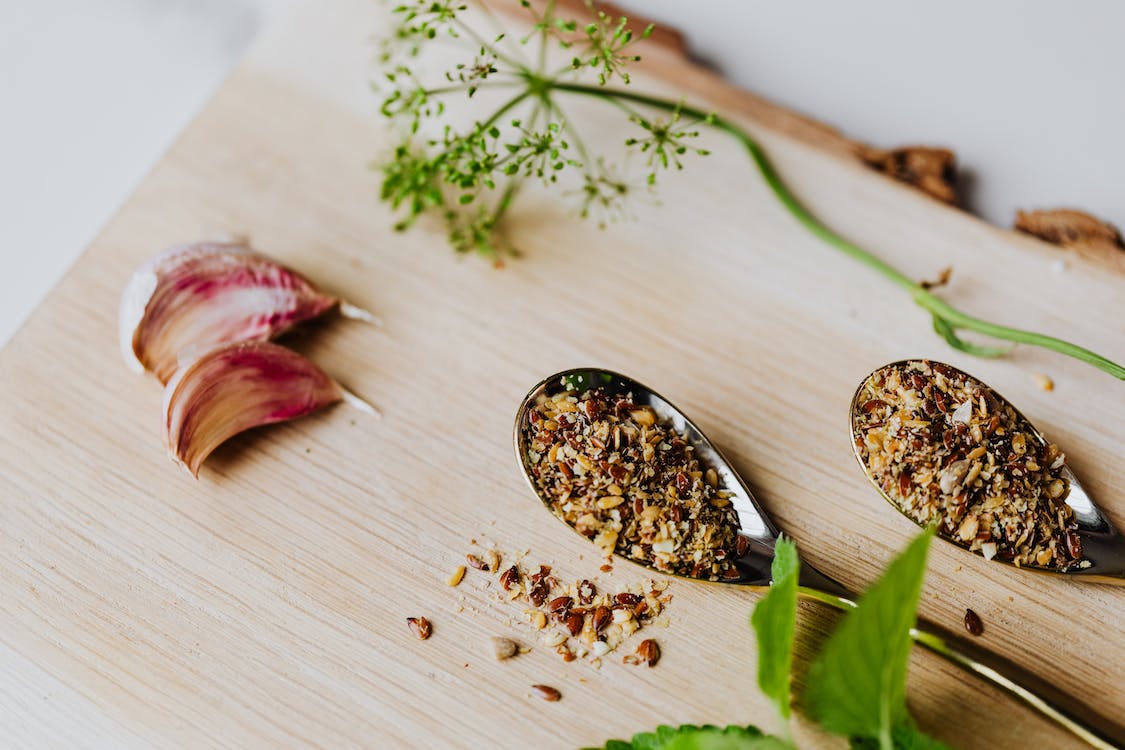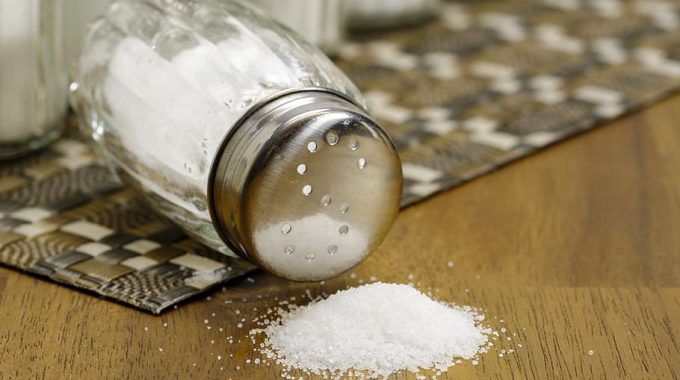7 Alternatives to White Salt
Excess salt consumption can have harmful effects and cause health problems (water retention, hypertension, osteoporosis, cardiovascular disease, and disturbance of the intestinal microbiota…)
Fortunately, there are tricks to reduce your daily consumption without sacrificing your gourmet palate!
Discover 7 products that can effectively replace salt in your everyday cooking.
1. Gomasio
Gomasio is a Japanese product from unrefined sea salt (about 5%) and sesame seeds (95%). This mixture is ideal because it allows you to reduce your salt consumption considerably and assimilate it more quickly (thanks to the association of salt with a vegetable).
Note: when combined with a vegetable, salt, like all minerals, is absorbed more quickly and more effectively. The faster assimilation of salt helps limit storage in the body (and therefore water retention).
Gomasio also allows you to take advantage of the many virtues of sesame seeds, which are rich in saturated fatty acids, vitamin E, B vitamins, fiber, calcium, and magnesium… Not to mention its divine taste, perfect in salads or hot dishes!
2. Soy sauce
Soy sauce is made from the fermentation of soybeans and wholemeal wheat roasted in salted water. It is an ideal alternative to salt (provided you don’t overuse it, as it still contains a little salt).
It is very digestible and rich in lactic acids that help strengthen intestinal flora. Moreover, it brings proteins, minerals, and vitamins. Ideal to salt your Asian dishes, but also all your other recipes!
Good to know: if you follow a gluten-free diet, adopt tamari, the traditional soy sauce prepared exclusively from soybeans, without adding other cereals.
3. Grey salt
Unlike white salt, which is refined to the extreme, grey salt still contains the many minerals that make it so rich in nutrition: magnesium, calcium, potassium, iron, manganese, etc. Try it (in moderation, of course): you will be surprised by its taste, which is quite different from traditional white salt.
4. Low-sodium salt
Low-sodium salt is a salt that has been “lightened” in sodium. It tastes the same as salt but contains up to 75% less sodium. It is generally presented in liquid form and enriched with various trace elements. These products are sold in stores, specialized Internet sites, and some natural and organic stores.
For dosage, check the manufacturer’s directions. Generally, 1/2 teaspoon of low-sodium liquid salt corresponds to a pinch of salt.
5. Celery salt
Celery salt is made only from dried and dehydrated celery, a plant naturally rich in bioavailable sodium (easily absorbed by the human body). You can prepare it yourself at home. Here is the recipe.
Thinly slice a stalk of celery. Spread these slices on the baking sheet covered with baking paper.
Please turn on the oven to the lowest setting and let the celery dry (with the oven door ajar to release the moisture) for at least 5 or 6 hours until it completely dries.
Then grind it into very fine powder.
Store your celery salt in a tightly sealed jar. You can use it to “salt” all your dishes.
Good to know: don’t confuse “celery salt” with “celery salt”, usually found in supermarkets in the spice section. The latter is simply a mixture of salt (90%) and celery powder (about 10%).
6. Seaweed
Seaweed is naturally salty since it grows in salty seawater. It is, therefore, an ideal alternative having exceptional richness in minerals, trace elements, vitamins, fiber, etc… You can add a few pinches to salads, fish dishes, and soups…
Wide varieties of seaweeds are sold in fresh or dehydrated form (like herbs) in organic stores and some supermarkets.
Nori: This is the seaweed found in maki. It is particularly rich in protein and calcium.
The wakame: it is served in a salad in Japanese restaurants. Rich in minerals, it has a pleasant oyster taste.
Dulse: remineralizing, it has an iodized taste, both sweet and strong.
Sea lettuce: an excellent source of vitamin C and iron. It is generally sold in the form of flakes.
A recent report draws attention to the risk of excess iodine intake in the case of large and regular consumption of seaweed. Therefore, government-controlled supply channels are recommended for all seaweed-based foods and supplements.
Caution: not recommended for people with thyroid disorders, heart disease, or renal insufficiency, as well as pregnant or breastfeeding women, without medical advice.
7. Herbs and spices

Instead of adding salt to your dishes, get into the habit of adding herbs and spices of your choice. This will enhance the flavor of the preparation and allow you to do without salt. Here are some ideas for winning combinations.
With poultry: bay leaves, coriander, savory, curry…
With meat: thyme, oregano, rosemary, cinnamon…
With fish: lemon grass, coriander, basil, turmeric,
With starchy foods (pasta, rice, potatoes…): thyme, oregano, rosemary, cumin, turmeric…
In salads: mint, coriander, parsley, basil…
In cooked vegetables: tarragon, chervil, cumin…
These 7 products mentioned above will effectively replace salt in your everyday cooking. Note that one of the main risks of excessive salt consumption is hypertension. This is characterized by increased blood pressure, which can significantly increase the risk of cardiovascular disease. So how do you follow a salt-free diet? Discover all the answers here.



